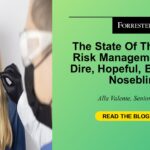Having conversations with clients and learning from their experiences is one of the best parts of my job. Those conversations often yield new perspectives on the topics we know, and we dive into new ideas together. I had one of those conversations recently when a client asked, “We know research must have a clear objective, must be actionable, and should be aligned with business goals, but is there more to consider? What does ‘good’ research look like?”
This thoughtful question turned into an opportunity to reconsider what we know about research and delve into best practices that I’ve been hearing from research teams and leaders. Yes, research must have clear objectives, use the right methodology, and be actionable to have impact. These are well-known qualities of good research. There are also more subtle qualities that we don’t always talk about but are crucial to making research successful. For now, I’ll focus on three of those qualities. In addition to having clear objectives, sound methodology, and being actionable, good research must also be:
- Connected. In successful organizations, research connects to customers, stakeholder and business goals, and previous research findings. Those organizations connect to customers by observing their behavior and getting direct feedback from them. Research connects to stakeholder and business goals through a shared approach to decision-making and effective research partnerships that facilitate collaboration. These partnerships improve buy-in for research and make research an irrevocable part of decision-making. Successful teams systematically review past research to identify what is already known and where the gaps lie. This helps teams avoid doing repetitive work and focuses research on the gaps that haven’t been examined yet.
- Continuous. Successful teams realize that customer research is an iterative process guiding decisions from discovery to creation and execution; it’s not a one-time activity to validate product decisions that have already been made. Expertise guides the process, and research is conducted at various levels, from strategic to tactical, on a regular schedule. An agreed-upon research cadence that documents the type of research activities and their frequency (e.g., discovery research at the start of each quarter and evaluative research every two weeks) helps define roles and responsibilities, as well as when researchers and stakeholders should come together to make decisions.
- Timely. I often hear from research teams that their findings are not utilized due to time pressure or changing priorities in the organization. To drive decisions and be actionable, research must be conducted at the right time, while it can still help decision-making — and that requires careful planning that gives you the ability to pivot and reframe your scope when circumstances change. A research and insights leader at a leading software company said that when they’re planning for a discovery project, they aim to finish it at a time where it’s going to be particularly useful so that it doesn’t just sit on a shelf.
Let’s Connect
What other qualities do you believe are integral to successful research? If you’re a Forrester client and would like to learn more about research best practices or want to share examples of what good research looks like in your organization, let’s connect. You can set up a conversation with me here. You can also follow or connect with me on LinkedIn.







